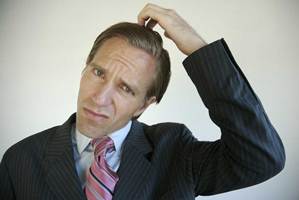April 7, 2011
The Sin of Synonyms
As we wait for the Federal Circuit’s en banc pronouncement on inequitable conduct in Therasense, Inc. v. Becton, Dickinson, the claim construction aspect of that case illustrates a greater difficulty in patent infringement cases than divining the fraudulent intent of applicants and their attorneys. In the panel’s opinion, the Federal Circuit noted that, after a Markman hearing, the district court construed several terms including deducing that “aperture” as used in the claims meant “opening.” While Therasense has received more attention because of the inequitable conduct issue, this more mundane aspect of the opinion highlights a problem with the current two-step method of determining infringement, the first step of which is “construing” the claims. In this first step, terms carefully chosen by inventor or the inventor’s attorney are routinely replaced with synonyms. (One wonders if Therasense’s claim originally used the term “opening” whether a Markman hearing would have construed it to mean “aperture.”) These synonyms are then used in place of the inventor’s own words to determine whether the patent has been infringed.
What’s wrong with this procedure? Two things: First, it disregards the inventor’s chosen words in favor of words representative of the inventor’s chosen words. Second, it requires the courts to answer questions that are not before it.
Disregarding the Inventor’s Own Words
The current process of claim construction replaces the inventor’s carefully chosen words with synonyms selected from competing parties’ assertions during the claim construction process. Thus, the trier of fact does not have a chance to compare the accused device with the patentee’s claim, but only with a synonym of the patentee’s claim. But these synonyms are different from the words the inventor chose—otherwise why would they be substituted for the inventor’s actual words?
In fact a good prosecutor aware of this process probably should not use the most apt words to describe the invention when writing the claims, but words whose synonyms are the most apt words. That way, instead of losing the benefit of the most apt words, the patentee would be given the benefit of the most apt words through claim construction process. It is, of course, ridiculous not to draft the claims to properly cover the invention, so the real problem is substituting different words for the inventor’s words.
Another issue is knowing when does the claim construction process end? A patent attorney friend would muse before every lunch, “when does meat tenderizer stop working?” Similarly, when is the claim construction process finished? If we have to define the words of the claim, why don’t we have to define the words in the definition? In other words, if in Therasense we didn’t think that the jury would understand the word “aperture,” why would we think that they would understand “opening”? In Fuji Photo Film Co., Ltd. v. ITC, “opening” was the word that the parties believed needed construction (and apparently it means hole, breach or—as you might suspect—“aperture”). So in Therasense, we had a jury that needed to be told that a aperture is an opening, yet apparently this would have confounded the jury in Fuji Photo who needed to be told that “opening” means “aperture.”
Answering Questions That Have Not Been Asked
The second problem with the current method of determining infringement is that it requires a court to answer that which is not being asked by the parties before it. The mischief is obvious – neither of the parties has an interest or incentive to define a claim for all purposes. The plaintiff is only concerned with reaching a construction that includes the accused device, and the defendant is only concerned with reaching a construction that excludes the accused device. Any construction is beyond this is beyond what the court needs to decide, and it is beyond what the parties are prepared to inform the court.
In Therasense, nobody really needed a definition of what an aperture is, they only needed to know whether what the accused product had was an aperture or not. Any further definition beyond that was wasted in deciding the Therasense case, and useless in a future case involving the patent where some different aspect of the nature of an aperture might be at issue.
What then of the Supreme Court’s mandate to the courts to construe a patent’s claims? There is still plenty for a court to do in construing the claims as a matter of law. For example, the Court may determine that, as a matter of law, the inventor had expressly or impliedly defined the claim term to exclude the allegedly corresponding structure in the accused device. The Court may find a disclaimer in the specification or the prosecution history that excludes the accused device as a matter of law. These kind of “negative” constructions are more useful to the jury and are more useful in subsequent cases involving the patent.
In Phillips, the Federal Circuit told us to put down the dictionaries we had become too reliant upon after Texas Digital. Now it’s time to put down our thesauruses, and only define claim terms where the plain meaning of the term has been altered as a matter of law.


































